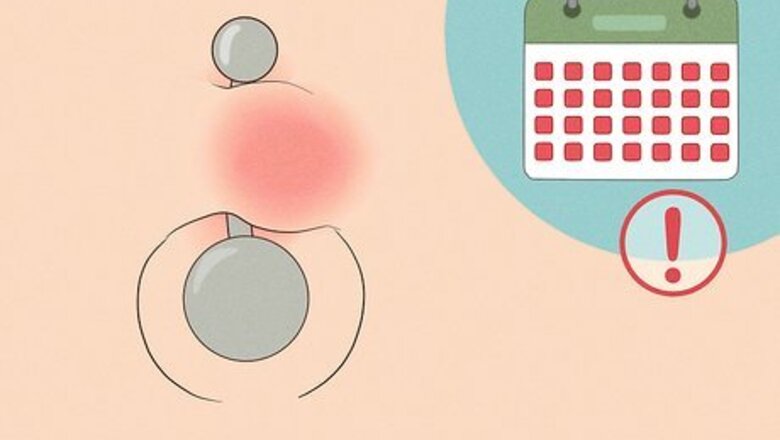
views
- Clean your piercing every day with saline solution or a mild soap, taking care to wash around both piercing holes and your belly button.
- To disinfect an infected piercing, hold a saline compress against your belly button for 10 minutes. Signs of an infection include redness, swelling, and green or bloody pus.
- Avoid swimming, taking baths, and strenuous exercise until the irritation (or infection) goes away.
- Contact your doctor if you have an infection (redness, pain, swelling, pus) that lasts longer than a week.
Treating an Infection
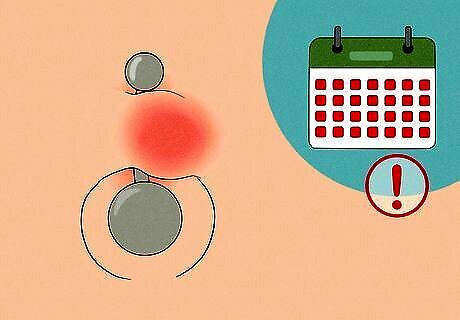
Recognize signs of an infection. The area around a new piercing may be red, tender, and/or swollen for a few weeks. However, if these symptoms last more than three weeks, they may indicate an infection. Similarly, yellow discharge is normal for about a week after getting a belly button piercing. If the discharge continues, turns green, or includes blood, this likely indicates an infection. Other indications of an infection include excess crust around one or both of the piercing’s holes, persistent pain or soreness to the touch, skin sensitivity, the ability to see the piercing through the skin, or any movement or loosening of the piercing itself. If any of these symptoms are present, consult your doctor.
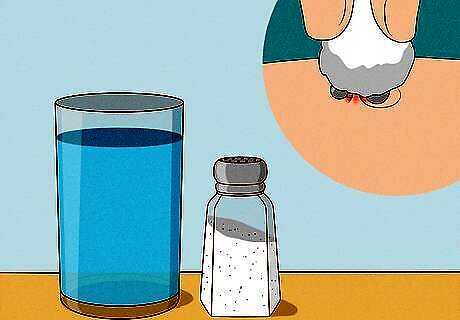
Disinfect the area with a saline compress. A saline press is another way to wash and disinfect your belly button piercing that will also reduce pain or other irritation from infection. Dissolve a quarter teaspoon (1.2 mL) of salt in a cup of warm water. Use a cotton ball or piece of clean gauze to soak up the solution. Lie on your back and gently hold the saturated material onto your belly button area for 10 minutes. Repeat this process twice daily to help kill bacteria and reduce irritation. Dry your belly button with a disposable paper product like a paper towel. A clean towel and gauze are other good alternatives.
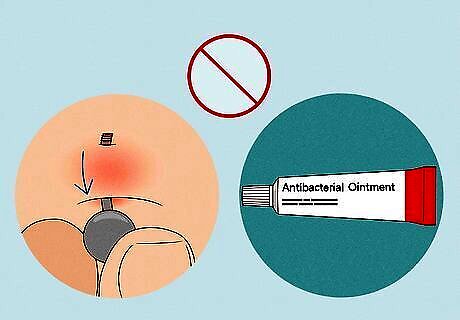
Do not remove your jewelry or use an antibacterial ointment. While these actions may be tempting, they may actually prolong the healing process. Removing your jewelry can lead to other health complications, such as further swelling. Similarly, antibacterial ointment can inadvertently trap bacteria within the infected area.
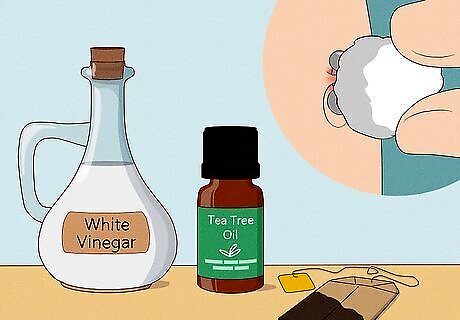
Consider supplemental remedies. Tea tree oil, white vinegar, or a steeped chamomile tea bag are all said to have infection-fighting properties. Apply 1-2 drops of your chosen solution to the infected area, or hold a steeped chamomile tea bag on the area for 5-10 minutes. While a saline solution is the recommended method of disinfecting your piercings, these may offer supplementary relief from irritation and other symptoms of an infection. Aloe vera gel can help soothe an irritated belly button and may even help prevent scarring. Plus, you can even make it yourself.

See a doctor if your piercing has been infected for over a week. Home treatment may not be adequate to rid your piercing of a persistent infection. If you have an infection that lasts longer than a week, set up an appointment to see your doctor. If your belly button gets especially swollen, is significantly painful, and/or continually bleeds or discharges fluid, see your doctor as soon as possible.
Keeping Your Piercing Clean
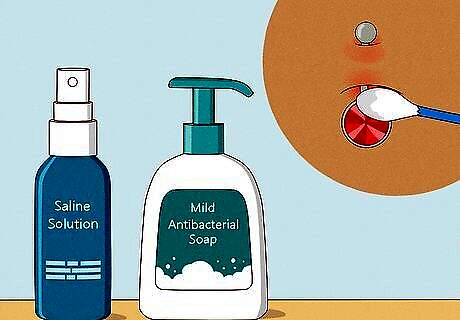
Clean the piercing with mild soap or a saline solution daily. Regular cleaning is the best way to speed up the healing process after receiving a piercing. After washing your hands with soap and warm water, use a Q-tip or cotton ball dipped in saline solution or mild antibacterial soap to wash both holes made by the piercing and your belly button. Gently rotate your piercing four times after washing. Cleaning your piercing daily will reduce the amount of time that your belly button is tender and help to prevent serious irritants such as infection. To make your own saline solution, mix half a teaspoon (2.5 mL) of salt into a cup of warm water until it dissolves. Continue washing your piercing and the surrounding area once or twice daily until the redness, swelling, and discharge subside.
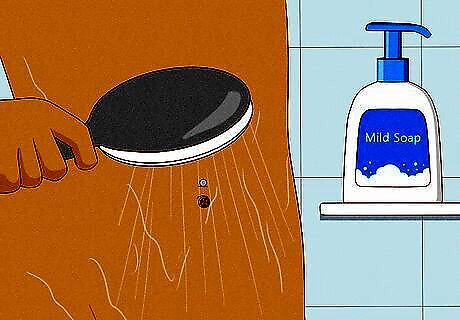
Wash the piercing with mild soap every time you shower. Once the belly button piercing has healed, washing it regularly with gentle soap is still essential to avoid reinfection. Be sure to wash both holes of your piercing, as well as your belly button and the surrounding area. Then, allow water from the shower to wash the soap away. Showering is the recommended method of washing, as bathtubs can harbor bacteria that may infect your piercing. Don’t use a washcloth or loofah to clean your belly button piercing. These can store bacteria and may pull or otherwise irritate your piercing.
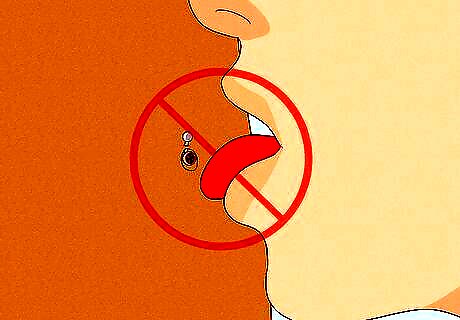
Do not allow body fluids to touch the piercing. One common irritant and a potential source of infection for belly button piercings are bodily fluids. This includes your own or other people’s fluids. Avoid getting saliva, sweat, and any other bodily fluid on or around your belly button piercing. When you sweat, be sure to wash your belly button piercing at your earliest convenience.
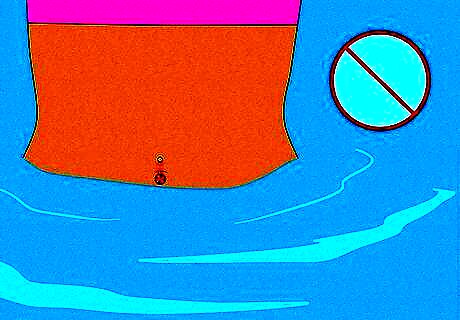
Stay out of bodies of water. Do not get in a pool, hot tub, or natural body or water while your belly button piercing is healing or infected. Even a clean, well-maintained, and chemically-treated pool may still contain bacteria that can cause an infection or prolong healing.
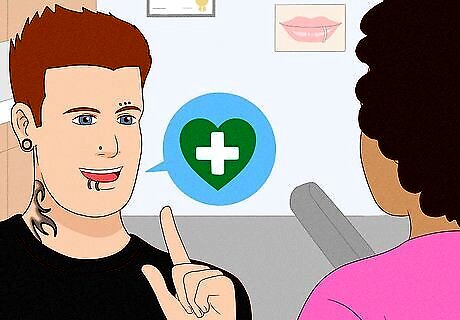
Follow your piercer’s cleaning directions. After receiving your piercing, the professional that gave it to you will direct you on how best to clean it, so it heals properly. Be sure to write their directions down, so you don’t forget. If you experience unpleasant symptoms such as swelling or discomfort, call the business where you received the piercing and ask what they recommend for treatment.
Minimizing Physical Irritation

Avoid contact sports for two weeks. Your belly button piercing will be especially susceptible to irritation for the first few weeks you have it. During this critical healing period, avoid any activities that involve physical contact. More to the point, avoid any strenuous exercise that may disrupt the healing process. Don't play team sports like soccer or basketball until your piercing is fully healed. Avoid activities that involve extensive stretching for two weeks, such as climbing and yoga.
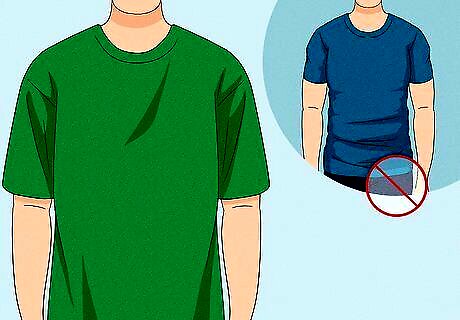
Wear loose shirts to minimize chafing. Even small amounts of chafing or abrasion from your clothing can irritate your belly button. Especially during healing periods after a new piercing or following an infection, wear loose-fitting clothing that will not constantly rub or apply pressure to your piercing.
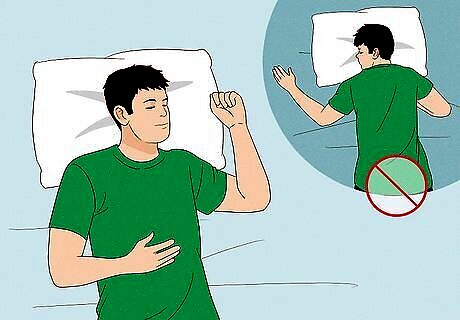
Try to sleep on your back. Avoid sleeping on your stomach, as doing so can irritate your belly button piercing. While sleeping on your side is fine, sleeping on your back is best. Most importantly, avoid sleeping on your stomach.
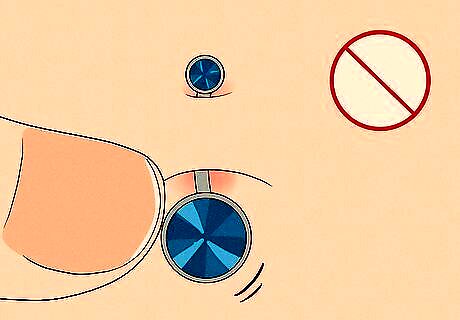
Don't fiddle with your piercing. Fiddling with your belly button can cause it to become irritated and may even contribute to an infection. In particular, avoid absent-minded touching or tugging on your belly button piercing. When you want to adjust your jewelry or touch the area for another reason, be sure to wash your hands before doing so.




















Comments
0 comment